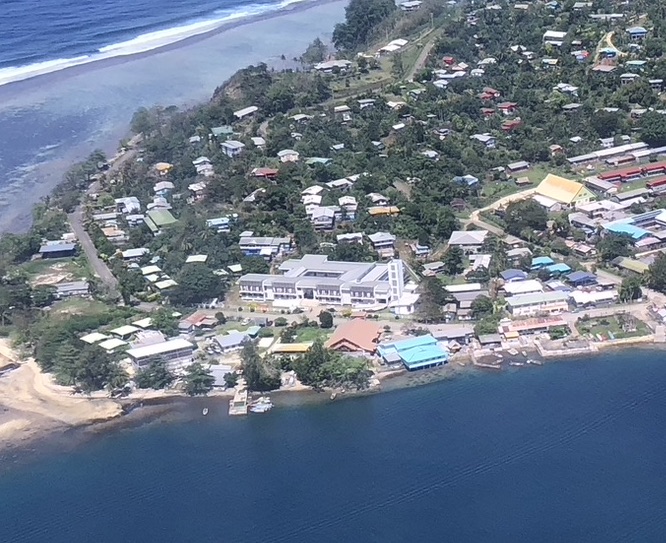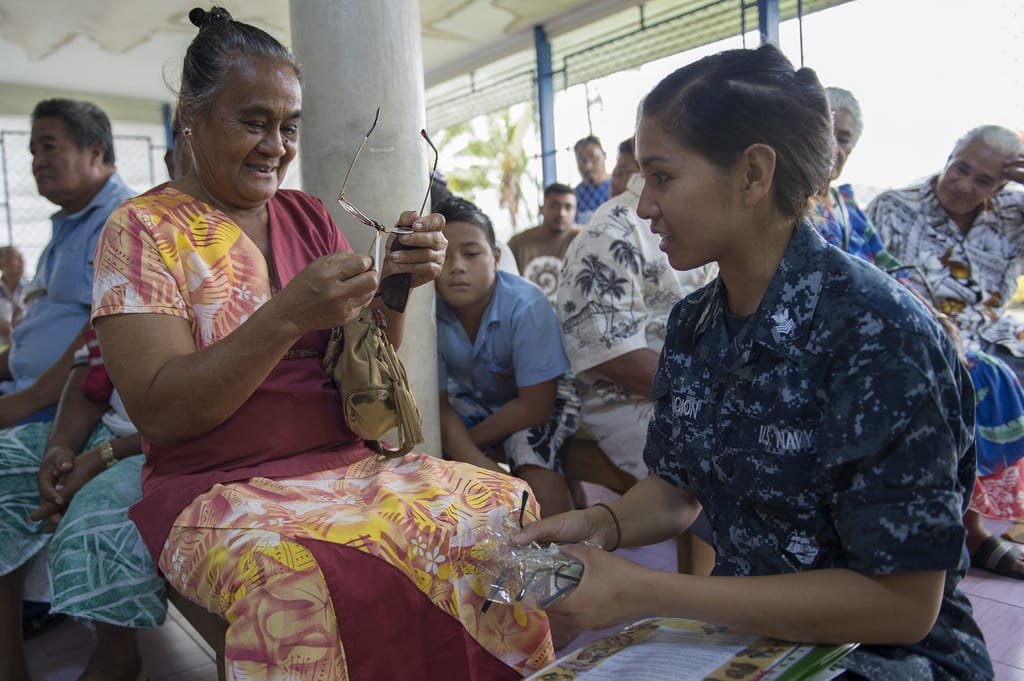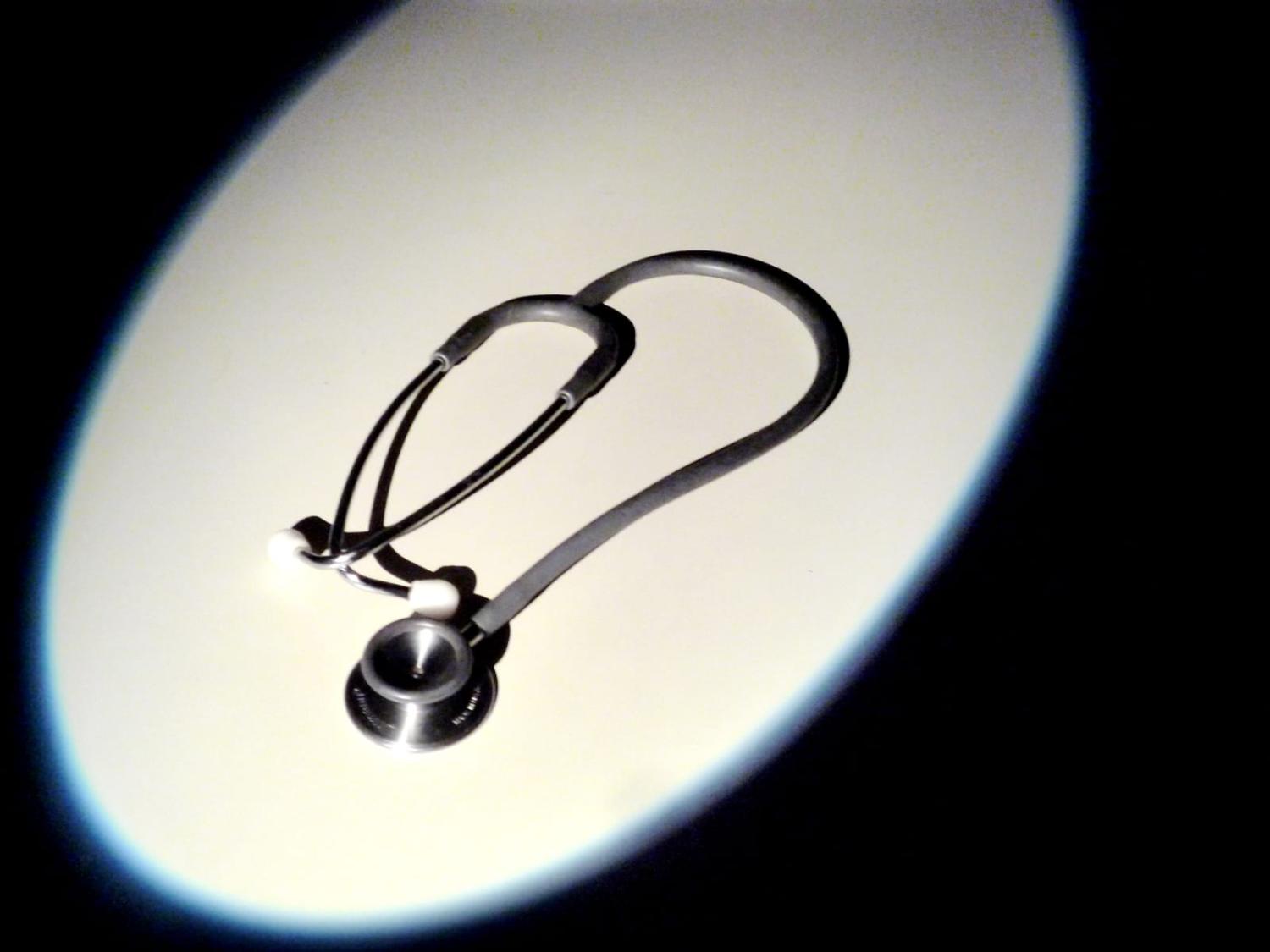Pacific Island countries see Japan differently than they do the United States and China. A 2023 Rand report captured this sentiment well, noting “Japan’s greatest advantage amid the China-US competition over the [Pacific] is that it is not the United States or China.”
Part of this distinction is that Japan has a long history of supporting health in the Pacific Islands through infrastructure upgrades and construction. For instance, after Gizo Hospital, Solomon Islands’ second-largest hospital, was severely damaged by an earthquake and subsequent tsunami in 2007, Japan relocated the hospital. The construction took into account the regional seismic activity, power and water challenges, and natural airflow within the building to reduce infectious disease transmission. Japan is also currently upgrading Solomon Islands’ other large secondary hospital, Kilu’ufi Hospital, on Malaita.
In 2022, Japan donated a new “medical ship,” the Liwãtoon-Mour, to the Ministry of Health and Human Services of the Republic of Marshall Islands. That ship is fitted with a portable x-ray machine, dental unit and a minor surgical theatre allowing doctors, nurses and dentists in the Marshall Islands to visit outlying islands and deliver medical and dental care.
Many other infrastructure projects in the Pacific Islands by Japan include road, airport and bridge upgrades. And the recent announcement by Japan’s Ministry of Foreign Affairs highlighting a grant agreement with the Samoan government to improve the facilities at the Faculty of Health Science, National University of Samoa is also noteworthy. National University of Samoa (NUS) is the Pacific Island region’s fourth medical and health sciences university and it plays a critical role in addressing the shortage of the health workforce in the region.

American policymakers should take note of Japan’s commitment to supporting infrastructure improvements and upgrades in the Pacific Islands, in particular in health and education. Japan’s Pacific Island Countries Friendship Parliamentary Caucus, established in 2014, and the US Pacific Islands Caucus, founded in 2019, are in a unique position to work together to educate their citizens on the Pacific Islands and to advocate for foreign policy that includes health projects in addition to security concerns.
The United States and Japan have a history of diplomatic collaboration. In 1993, the countries collaborated on the construction of the Solomon Islands Parliament building. Japan is a founding member of the Partners in the Blue Pacific (PBP) and participates in the US, Japan, Australia Trilateral as well as the Quad grouping. Currently, there is talk of bringing Japan into AUKUS. All of these partnerships focus on security and have limited support for projects that can address Pacific Island sectors including health and education. A coordinated “health as diplomacy” partnership between Japan and the United States could mobilise the Quad, PBP, and other multinational partnerships to do the same.
One example is the United States, Japan and Australia funding the placement of an undersea cable to east Micronesia that can be used to extend telemedicine to isolated clinics and hospitals throughout the Pacific Islands, similar to how the Alaska Native Tribal Health System uses telehealth. Another is expanding the Quad’s support for pandemic preparedness to “all of health preparedness”. Pacific Island countries are faced with a triple health threat, of increasing rates of non-communicable diseases that are the leading cause of death in the region, endemic infectious diseases and the rising incidence of trauma and injuries. All of these are superimposed on vulnerability to extreme weather events. The Covid-19 pandemic exposed how underdeveloped Pacific Island health systems are.
With Japan providing health infrastructure development, something it does quite well, the United States should partner with Japan to establish medical exchange programs that work with the Pacific Island healthcare workforce on improving skills and care.

Pacific Island countries are small, separated by vast oceans, have fragile social infrastructures and a lack of economies of scale. According to the International Monetary Fund, the average GDP per capita in the region (excluding Australia and New Zealand) was US$2840 in 2023. Australia and New Zealand continue to be traditional donor partners in the region, but this clearly is not enough. While respecting their committed efforts, Japan and the United States should join them in supporting coordinated education, healthcare and infrastructure improvements and human resource development.
The United States is slowly re-engaging in the Pacific Islands. To date, the Biden administration has hosted two Pacific Islands Forum Summits in Washington and laid in place some structural diplomatic components such as a new USAID Regional Pacific Mission in Suva, Fiji and opening new embassies in Tonga and Solomon Islands. The Millennium Challenge Corporation has awarded modest threshold grants to Kiribati and Solomon Islands and the US State Department has provided support for clearing explosive remnants of war.
While these programs are needed, they are simply not enough. The United States must commit to developing high-impact partnership programs, such as health system strengthening, that interface with local as well as other development partners in the region. This is where working with Japan can assist the United States in taking that big step forward in order to deliver a “whole of Pacific approach”.
Main image via Flicker user Rosmarie Voegtli


